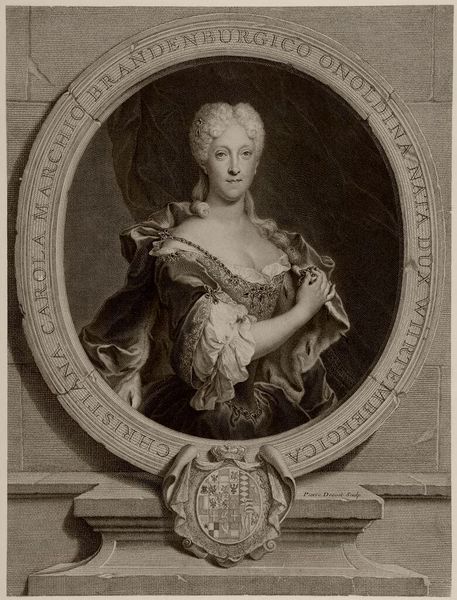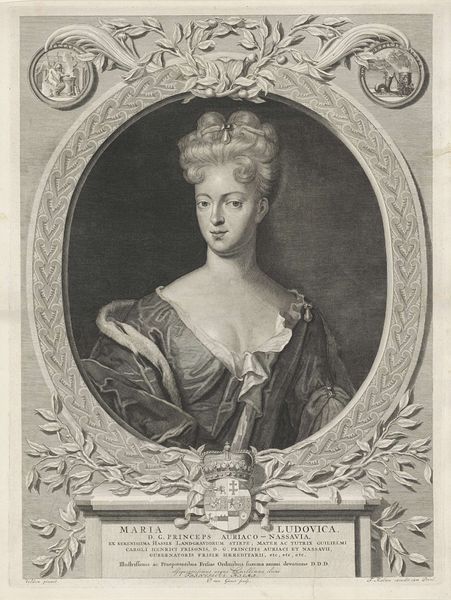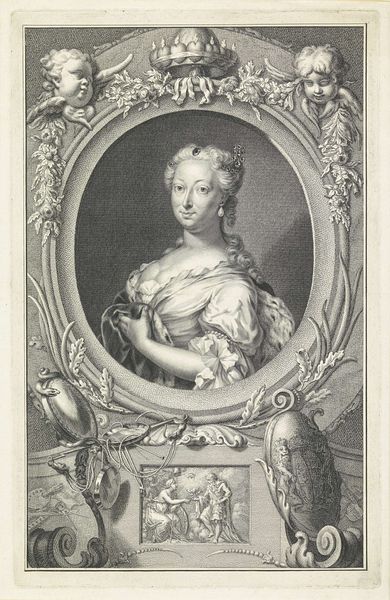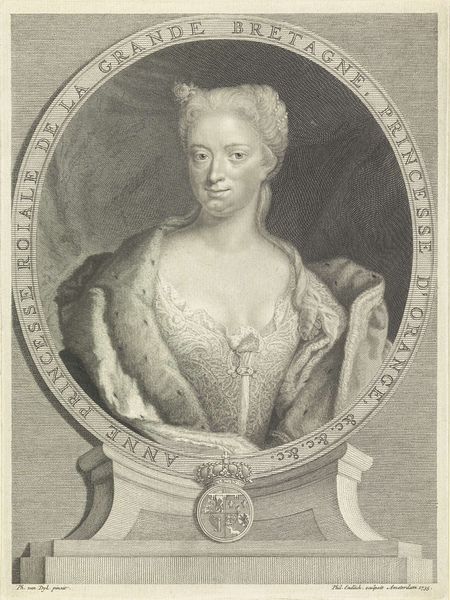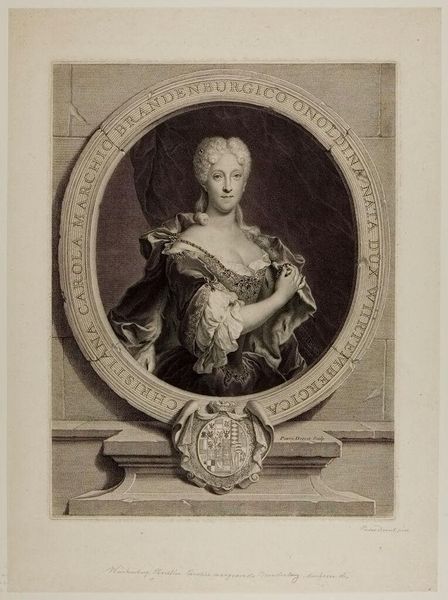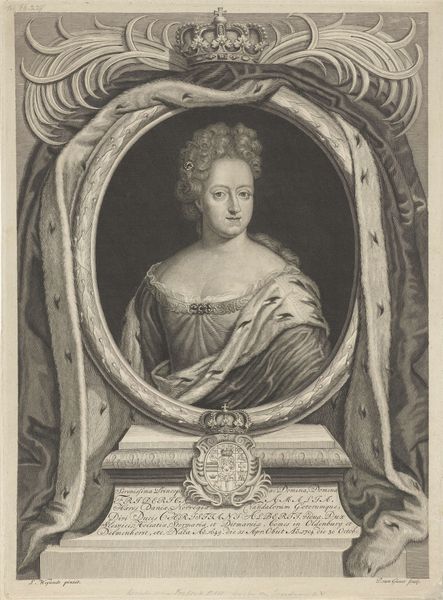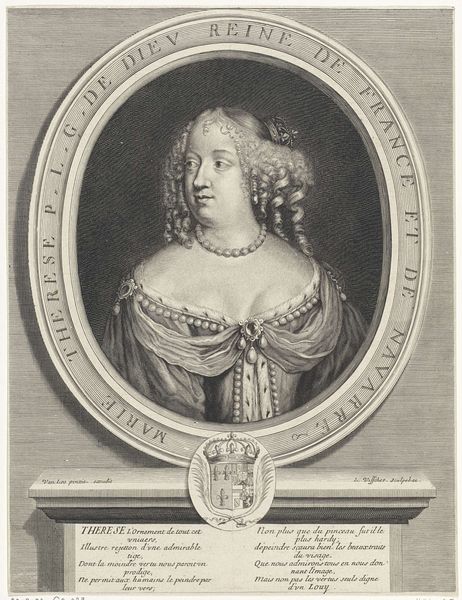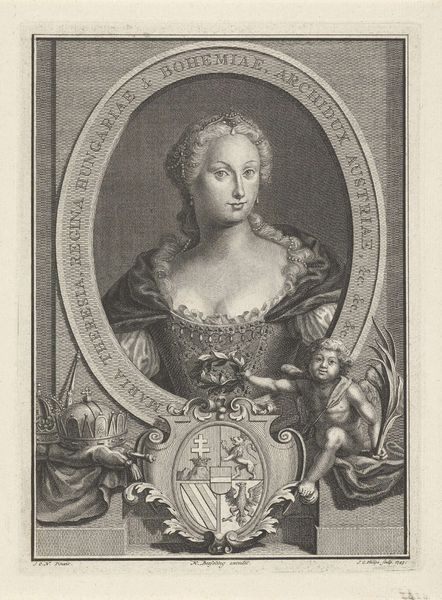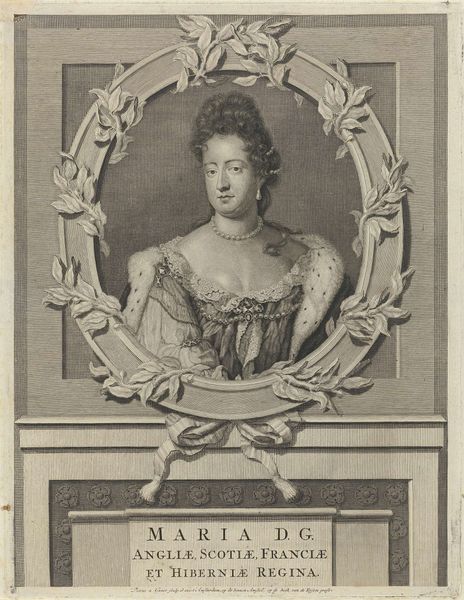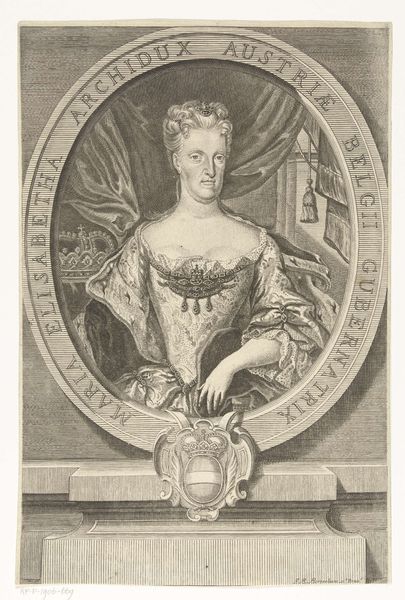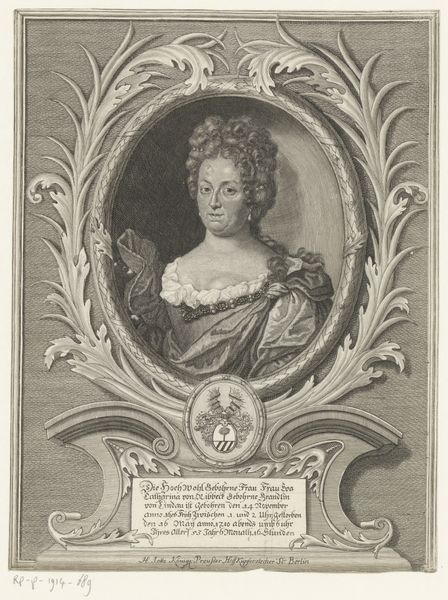
Portrait of Christine-Caroline, the Margrave of Brandenbourg-Onoltzbach, wife of Guillaume-Frédéric of Wurtemburg, 1694-1723 c. 1723
0:00
0:00
drawing, print, paper, engraving
#
drawing
#
toned paper
# print
#
sculpture
#
charcoal drawing
#
sculptural image
#
paper
#
charcoal art
#
unrealistic statue
#
framed image
#
france
#
19th century
#
charcoal
#
engraving
#
statue
Dimensions: 432 × 330.5 mm (plate); 447 × 345 mm (sheet)
Copyright: Public Domain
Curator: The subject before us is a print, “Portrait of Christine-Caroline, the Margrave of Brandenbourg-Onoltzbach, wife of Guillaume-Frédéric of Wurtemburg, 1694-1723” by Pierre Drevet, dating from around 1723. It’s currently part of the Art Institute of Chicago's collection. Editor: It strikes me as rather austere. The tight circular frame, the stone background, it gives the impression of a sculpture, more like a commemorative marker than a vivacious representation of a living person. Curator: Consider Drevet’s engraving process here; each precisely etched line was deliberate, part of a much larger network of reproductive prints circulated amongst elites. These allowed for dissemination of images portraying power to bolster their social standing across geographic locations. Editor: Precisely! It's about production. Looking at Christine-Caroline here, we see her trapped within layers of societal constraints. The ornate lace and heavy fabrics weren't just aesthetic choices. Each contributed to the performance and reinforcement of noble identity, wealth, and control during that period. This wasn't clothing created for comfort but for power and to distinguish itself from the clothes of the working classes. Curator: Note too the material contrasts-- the relative smoothness of her skin rendered in very fine lines, versus the dense hatching that suggests the weight of the fabrics. There is labor evident not only in Drevet’s artistry but also inherent within the aristocratic structures of patronage and class differentiation Editor: And if you look closely, you see how the symbols become a coded language – the headdress, jewelry, everything communicates lineage and status in a very gendered performance of class. Even her gaze is carefully calibrated. Curator: Agreed, all purposefully calculated in their means to an end.. This piece offers more than a likeness. By focusing on materiality and dissemination, we better grasp the mechanics of social representation through art. Editor: Ultimately, reflecting on Christine-Caroline trapped within this print, it offers a window into the power structures of the past. A moment encapsulated forever in ink, speaking volumes of that era.
Comments
No comments
Be the first to comment and join the conversation on the ultimate creative platform.
